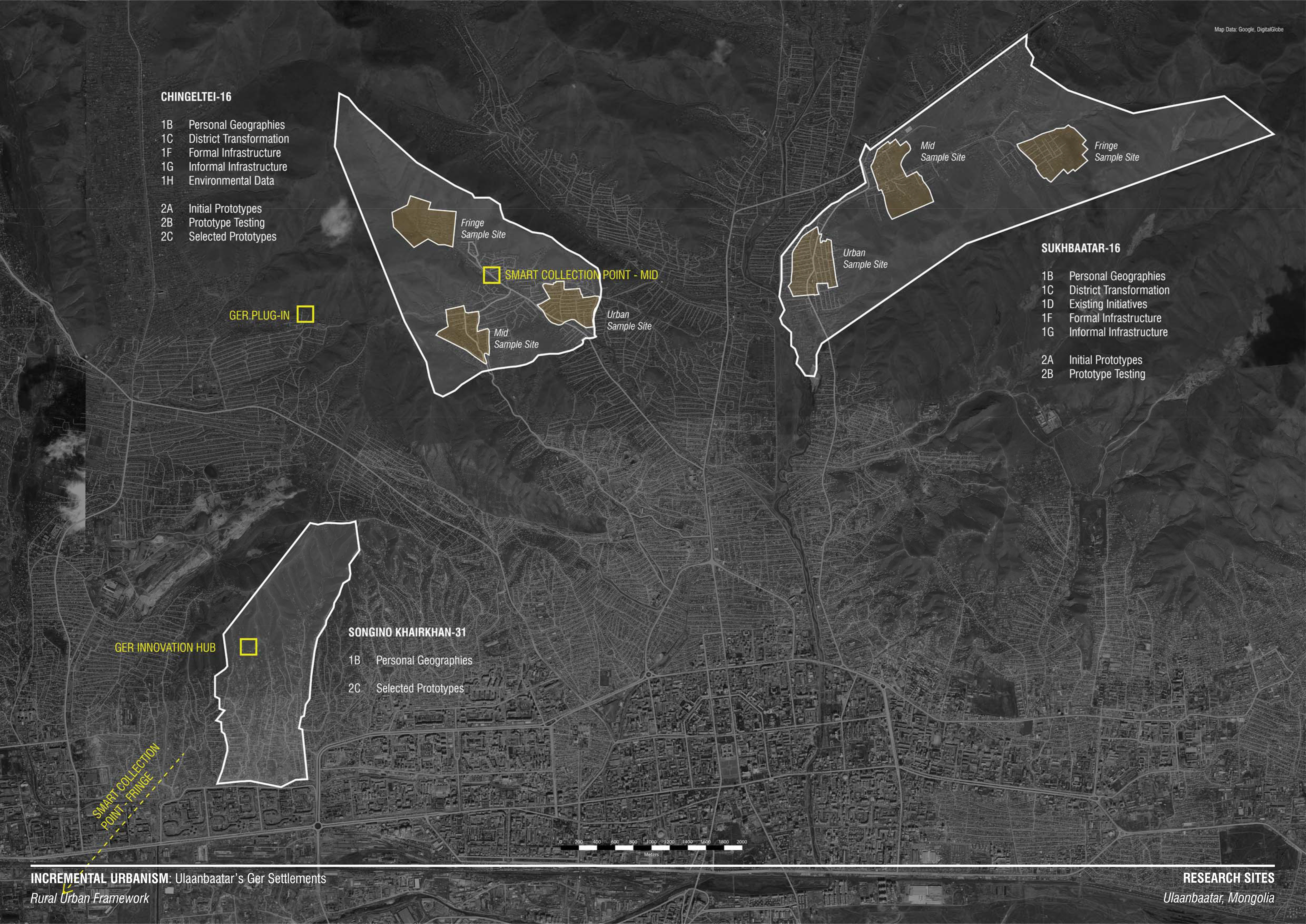Incremental Urbanism Report
For thousands of years, Mongolians have been living in gers –
portable structures made of timber, felt and canvas. It is a perfect
dwelling for the nomads. Yet, when this specific type of dwelling forms
the basic unit of inhabitation for Mongolia’s capital city, Ulaanbaatar,
it has led to unsustainable urban development, resulting in sprawling
districts that lack basic urban infrastructure and contribute to toxic
levels of air pollution in the city from coal burning stoves.
The report positions the Ger districts of Ulaanbaatar as a unique
example of an informal, yet legal, settlement. It documents their
spatial characteristics and mechanisms of growth and the impact of this
urbanisation process. Based on this research, the creation of an
incremental urban strategy for the Ger districts through the
implementation of a series of architectural prototypes, sets out an
alternative model for how these districts can be upgraded. As a more
agile, bottom-up solution, it could offer much needed sustainable
development solutions for the fringe districts of the city.
Read the full report here. ︎︎︎
Read the executive summary here.
︎︎︎
︎︎︎ Back to Research





